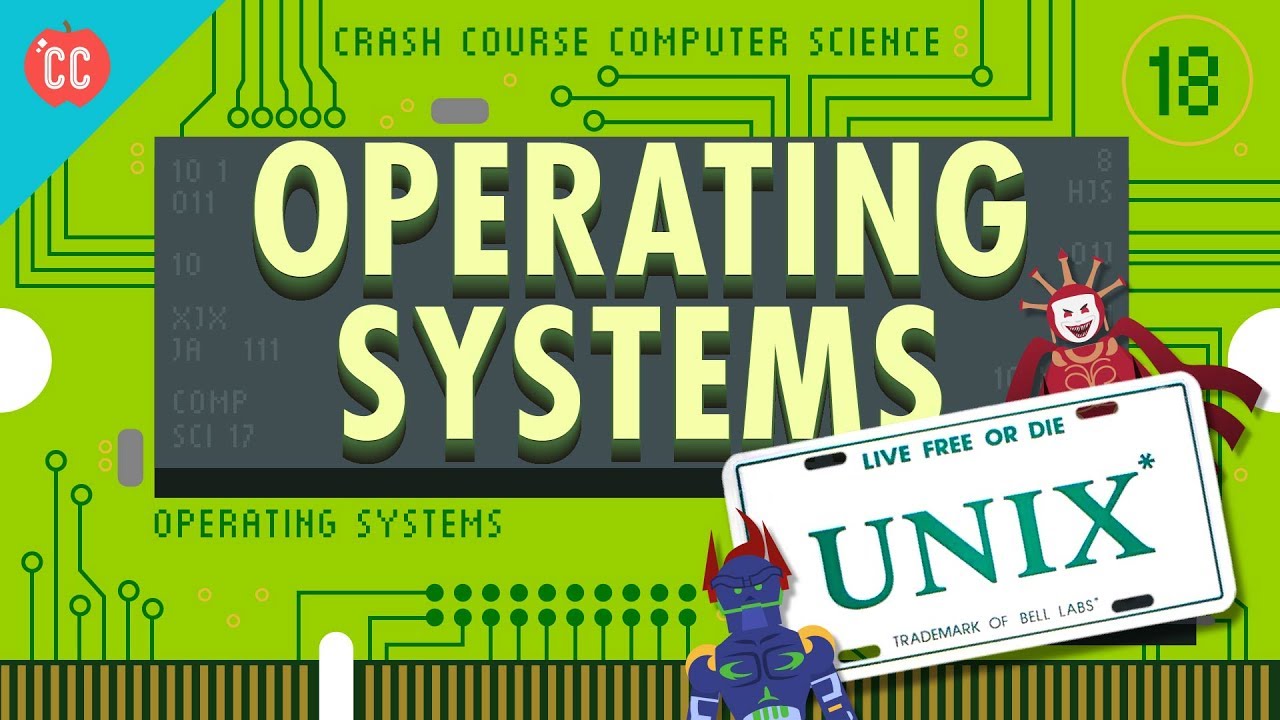Operating Systems: Crash Course Computer Science #18 from Techmirrors

Get 10% off a custom domain and email address by going to https://www.hover.com/CrashCourse.
So as you may have noticed from last episode, computers keep getting faster and faster, and by the start of the 1950s they had gotten so fast that it often took longer to manually load programs via punch cards than to actually run them! The solution was the operating system (or OS), which is just a program with special privileges that allows it to run and manage other programs. So today, we’re going to trace the development of operating systems from the Multics and Atlas Supervisor to Unix and MS-DOS, and take at look at how these systems heavily influenced popular OSes like Linux, Windows, MacOS, and Android that we use today.
What is an operating system?
An operating system (OS) is the program that, after being initially loaded into the computer by a boot program, manages all of the other application programs in a computer. An operating system is the most important software that runs on a computer. It manages the computer’s memory and processes, as well as all of its software and hardware. In addition, users can interact directly with the operating system through a user interface, such as a command-line interface (CLI) or a graphical UI (GUI).
Types of operating systems
Common desktop operating systems include the following:
- Linux is a Unix-like operating system that was designed to provide PC users a free or low-cost alternative. Linux has a reputation as an efficient and fast-performing system.
- Mac OS is the operating system for Apple’s Macintosh line of PCs and workstations.
- Unix is a multiuser operating system designed for flexibility and adaptability. Originally developed in the 1970s, Unix was one of the first operating systems to be written in the C language.
- Windows is Microsoft’s flagship operating system, the de facto standard for home and business computers. Introduced in 1985, the GUI-based OS has been released in many versions since then.
- Network operating system. A network operating system (NOS) is another specialized OS intended to facilitate communication between devices operating on a local area network (LAN).
- Real-time operating system. When a computing device must interact with the real world within constant and repeatable time constraints, the device manufacturer may opt to use a real-time operating system (RTOS).
Produced in collaboration with PBS Digital Studios: http://youtube.com/pbsdigitalstudios
Want to know more about Carrie Anne?
https://about.me/carrieannephilbin
The Latest from PBS Digital Studios: https://www.youtube.com/playlist?list=PL1mtdjDVOoOqJzeaJAV15Tq0tZ1vKj7ZV
Want to find Crash Course elsewhere on the internet?
Facebook – https://www.facebook.com/YouTubeCrash…
Twitter – http://www.twitter.com/TheCrashCourse
Tumblr – http://thecrashcourse.tumblr.com
Support Crash Course on Patreon: http://patreon.com/crashcourse
CC Kids: http://www.youtube.com/crashcoursekids
SourceTechmirrors
